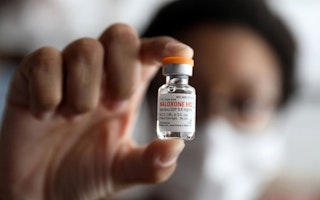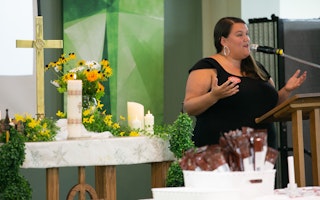Reaching Women Drug Users in Iran
By Buprenorphine Babe
As the International Harm Reduction Conference wraps up in Beirut today, Methadone Man and I are grateful to our fellow participants for all they’ve taught us on how opioid substitution treatment is making a difference in the lives of drug users around the world. We've been energized to learn about methadone making its way into Afghanistan, buprenorphine programs being launched into Lebanon, and the other strides taking place in improving access to drug treatment in the Middle East.
Another remarkable substitution treatment project in the region comes from Tehran, Iran. Iran has the highest per-capita opiate consumption in the world, according to the United Nations Office on Drugs and Crime, and nearly two-thirds of the country’s HIV cases are the result of injection drug use. Government statistics have estimated Iran has about 1.1 million severely dependent drug users, approximately 7 percent of whom are women.
While women in Iran may use drugs less frequently than men, they are more likely to die as a result. Also, as in many countries, women who use drugs face extreme stigma and are much more likely than men to experience unemployment, depression, and anxiety as well as general medical problems than are their male counterparts. Recognizing these hurdles, Dr. Shabnam Salimi and colleagues from the Tehran-based NGO Persepolis in 2007 established a women’s clinic to provide free methadone maintenance treatment as part of harm reduction services directed at women.
Salimi emphasized that creating a women-only program was the sole way women could access treatment in Iran, and with an all-female staff, the clinic has made inroads in reaching women drug users over the past four years. Salimi works one-on-one with patients to prescribe methadone, which often changes their lives. “When women are on drugs, they forget to care for themselves—to do their laundry, look after their children, brush their teeth,” Salimi said. “Once on methadone, they can start living a normal life again.”
What makes the clinic especially impressive is how it faces head-on the dominant prevalence of violence in its patients’ lives. A study conducted by Salimi showed that 100 percent of the clinic’s patients fight depression, and 40 percent had severe cases of the disease. Acknowledging depression among drug users rarely happens in methadone programs, making this clinic’s emphasis on addressing it striking. “For years, these women have been socially isolated and marginalized—they have nothing,” Salimi said. “We must first make women feel safe, establish trust, empower them if we want to reach them.”
Salimi herself is warm, kind, and passionate about her work with patients, qualities that help her to maintain a trusting environment at the clinic. From the get-go, new patients receive counseling from a psychologist and a social worker. The site has also provided a midwife to offer medical services, an attorney who gives legal aid, and regular vocational training.
Despite the program’s success, Salimi concedes that challenges remain. Iran is a male-dominated society, and this is one of the biggest barriers to women seeking substitution treatment and continuing on it. When a woman’s partner uses drugs himself, he may not wish her to get addiction treatment. If a woman is a drug user, but her husband is not, the shame of disclosure may prevent her from getting help. “My friend left treatment because her husband was still using drugs and he provided her with heroin,” one patient said. “She [wanted] to keep her family intact.”
To address these concerns, Salimi and her colleagues rely on women already on methadone to educate not only other women but also their families about the benefits of treatment, including through group therapy. The fact the program is women-only also can ease some wariness by a man about allowing his partner to participate. “Couples counseling is one of the most important factors to women getting treatment,” Salimi said.
The women’s clinic in Iran should be a model that is replicated at drug treatment programs across the globe, particularly in more conservative countries. Salimi and her staff should be applauded for their courage and dedication to take on this work. Instead, however, the program’s survival is under threat. Funding for the program has ended, and women who participate must now pay $15 a month, the equivalent of more than four days worth of food in Iran and thus an overwhelmingly expensive burden among a population often unemployed.
Soon the program may close altogether, an unimaginable blow to all the women it has assisted over the past four years. Perhaps one patient explained best why everything should be done to prevent this loss to Tehran’s community. “I was homeless, sleeping on the streets and in parks for ten years. Then someone told me about this place,” she said. “I have turned my life around. I got married and have a young child, and I don’t use drugs.”
Buprenorphine Babe is a superhero. Together with Methadone Man, she works to stop HIV in its tracks!

